Rules and recommendations for selection
Classic curtains will be relevant in a modern interior no less than in a classic style, but there are other features that need to be considered when choosing them.
- You need to select the width of the curtains for the size of a particular window, otherwise it may look disproportionate.
- Ample folds and brushes will look good on the wide and high windows of the hall.
- Dark and deep shades of burgundy, green, blue will be appropriate only in spacious rooms, for small living rooms and bedrooms, curtains of a classic style with tulle and a small lambrequin are suitable.
- Sophistication lies in the right choice of material. The classical style does not accept synthetics, noble fabrics are acceptable: velvet, silk, satin.
Signs of classic curtains are the presence of tulle, sliding curtains with or without tack, dense fabric material, long canvases, graceful folds.
In modern classics, a combination of textures and types of curtains is acceptable, which does not harm the general look of the interior. For example, classic curtains can be combined with Roman or roller blinds, and air curtains can be combined with blinds.
Types of Curtains
Today, the curtain market offers a wide selection of window decoration options, which modern designers successfully use to create a unique interior.
- Classic Roman curtains - This is a fabric that, using the opening system, forms parallel folds. They can be attached both to the window and to the window opening. They look aesthetically pleasing, suitable for a small room, easy to care for.
- Classic long curtains may fall to the floor or slightly reach it. Curtains are gathered on the sides with decorative ties and complemented by a light curtain, which is slightly collected in waves. Such curtains look luxurious due to the material, but also require special care.
On the picture An example of a bedroom in a classic style, where the curtains fall from a niche, which makes the window visually larger.
- French curtains create the atmosphere of a theater and celebration due to translucent waves on high and wide windows. Stationary French Curtains can be used as a tulle in addition to curtains, and a curtain with a lifting mechanism can be assembled into a lambrequin.
- Lambrequin You can decorate the space above the window, thereby making it visually higher. Lambrequin is not adjustable in height, it can be hard or soft, be the same color as the curtains, or become a contrasting accent.
On the picture example living room with hard pelmetinside of which a cornice is hidden, which gives an aesthetically finished look.
The choice of design and colors of curtains
It is important to choose not only the material and type of curtains, but also the color that can visually expand the space, find a response in the decor elements and just change the perception of the room.
You can choose curtains that will become a bright accent, but will have a similar pattern with wallpaper or the same ornament as on upholstered furniture. Also, curtains can be combined in color with upholstered furniture or with walls.A win-win option is to choose classic-style curtains to match the color of the kitchen facade, a large living room carpet or a bedroom bedspread.
Light shades increase the space, deep warm shades reduce it, this must be taken into account when choosing curtains in a small room.
In the classical style, white and cream, beige colors will always be appropriate, which can be varied with a brown garter or bright edging, fringe, tassels.
In order to focus on the window, you can choose curtains in a wide strip, where 2 or 3 colors are seamlessly combined.
Plain curtains are suitable for wallpaper with a pattern or pattern, in this case the interior will not be overloaded. If the wallpaper is plain or has a light texture, then you can choose curtains with patterns or ornaments to match the color of the wallpaper. Classical-style curtains with patterns will be appropriate in the children's room.
Material selection, fabric characteristics
Classical style curtains are distinguished by the nobleness of the fabric, which is widely represented and has a proven track record.
- Silk It has high strength, stretches well, does not let in the rays of the sun, beautifully shimmers in the light, drapes well.
- Taffeta dense to the touch, drapes into wide folds, repels moisture, serves for a long time with proper care.
- Atlas - silk durable material with a characteristic sheen. Dries quickly, does not accumulate static electricity. It is important not to dry the fabric and wash it at a low temperature.
On the picture An example of a window design in a classic style, where the curtains and the lambrequin are made of the same material, and floral inserts act as a bright decor.
- Brocade It is a silk-based fabric with an embroidered lurex pattern. Differs in weightiness, density. Hard material, hard crumpled.
- Velvet - dense material with a fine pile of silk fiber. It absorbs moisture, has a high service life, does not attract dust, drapes well, holds heat, and allows air to pass through.
On the picture An example of how velvet curtains can look easy due to color and protect from the sun at the same time.
- Jacquard differs in a large pattern, density, resistance to abrasion, retains color well, does not stretch. It is erased at a low temperature, it is impossible to squeeze.
- Chenille fabric It has high wear resistance, pleasant to the touch, good color retention, easy to drape, is presented in a wide selection of composition, color and pattern.
Types of classic cornices and mounts to them
An important role is played not only by the material, but also by the appearance of the cornice, as well as the strength of the curtains attached to it.
- Framing moldings most suited to the classic style. Fasteners are not visible behind the bar, which makes the window view complete. The baguette can be plastic with imitation of forging or wood, flat or carved.
- Tubular cornices There are one-level and two-level ones, decorated at the edges with tips and made to a specific size.
On the picture The interior shows a wooden tubular cornice, on which are translucent curtains with floral print and garters. Here is a classic in simplicity and elegance.
- Profiled cornices convenient when decorating a bay window or corners. Mounted both on the wall and on the ceiling. Made of profile aluminum.
- Wrought iron curtain rod will attract attention, so the curtains should be simple. This curtain rod is suitable for heavy fabrics. The best way of fastening will be eyelets and rings.
- Wooden cornices can be ceiling, wall, tubular and baguette. The natural shade of wood will fit into the classic interior of any room.
On the picture a wooden baguette is presented in the design of a classic style, from which a weightless tulle and even pastel shades hang.
Curtains can be attached in different ways to the cornice, based on the weight of the fabric and the style of the room.
- Eyelet Mount Suitable for modern classic style.This is a fastening method in which the rings are sewn into the curtain fabric, rather suitable for curtains.
- At ring mount, the fabric is fixed on hooks, and the rings are strung on a tubular cornice.
- Classic drawstring blinds look original and diverse due to the different way of tying (bows and different kinds of knots). In addition, the color of the ties may differ from the color of the curtains.
- Fabric loops, like eyelets, are strung on a cornice. The width of the loops and their number depends on the weight of the curtains. Loops can be on clips, in the form of braids or to be sewn to the fabric.
- Kuliska hides the top of the cornice due to the high frill. Such a mount is suitable for niche windows, a tubular cornice, for curtain cafes. When moving, a slight rustling of fabric will be heard, and not the sound of rings on the cornice.
- Curtains on the braid They look simple and elegant due to the frequent small folds that are formed due to pulling the laces to the desired limit. For lush drapery, fabrics need to be taken 2 times the size of the window.
Decorative accessories
The beauty of the classic style lies in the luxury and abundance of wealth that the details bring. Curtains are decorated with functional accessories, such as:
- Holders made of wood or metal, which are mounted on the wall, hold the shape of the drapery and decorate the curtains. The holders can also be on magnets, made of fabric or tape.
On the picture An example of curtain drapery and fixation with holders is shown. The classic mounting height is the level of the windowsill.
- Pickups control the level of lighting, easy to use, they can often be changed. There are in the form of hairpins, beads, fabric, ropes. They differ from the holders in that they are not attached to the wall.
- Brushes help shape and hold the curtains. Also, small brushes can be a decoration of a lambrequin or the edge of a fabric.
- Pelmet with many peroxides is suitable for window decor in the living room. It may be of a different material and contrasting color, in which case it is important not to overload the room with other decorative elements.
On the picture An example of how a lambrequin can become a decoration not only in the living room, but also in the kitchen.
- In classic style fringe decorates the border of the curtains. It can be of different lengths, with beads, glass beads and beads, with tassels and weaving.
Room Overview
Bedroom and kids room
For bedrooms in a classic style, gentle shades of light green, blue, cream are suitable. It is recommended to combine curtains with tulle or Roman curtains.
On the picture the color and pattern of the curtains is combined with the wallpaper on the accent wall in the bedroom.
Living room
In the living room you can experiment with the color of curtains and their shape. Soft pelmet decorate the spacious room in the Baroque style. French curtains can serve as transparent tulle along with blackout curtains.
On the picture the interior of the living room in a house with a second light, where light curtains do not draw attention to themselves.
Classical kitchen curtains
For the kitchen, you can use light curtains in a classic style that will let in sunlight and harmonize with the color of the headset.
The luxurious dining room will be decorated with beige or olive curtains along with a translucent tulle.
Bathroom
For the bathroom, Roman, roller or French curtains in the classical style of light blue or white color with a pattern are suitable.
When choosing the type and color of curtains in a classic style, it is important to consider the size of the room, the level of natural light, decoration elements, and proper care of the fabric guarantees a long service life.
Photo gallery
With the help of curtains, you can experiment with the interior of the room and design the window opening in an original way. Below are photos of examples of using classic curtains in the interior.

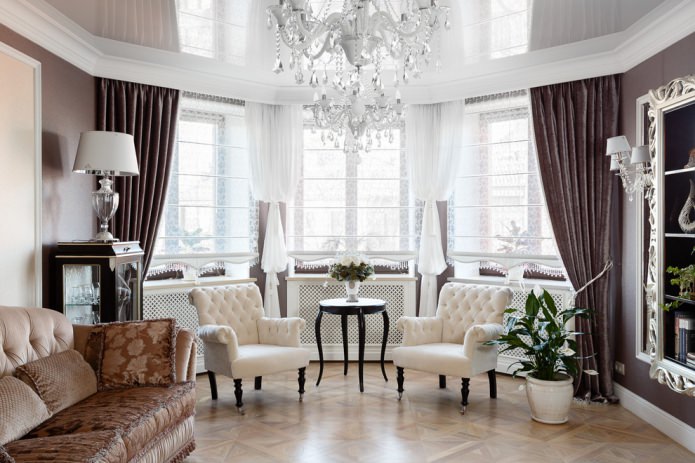
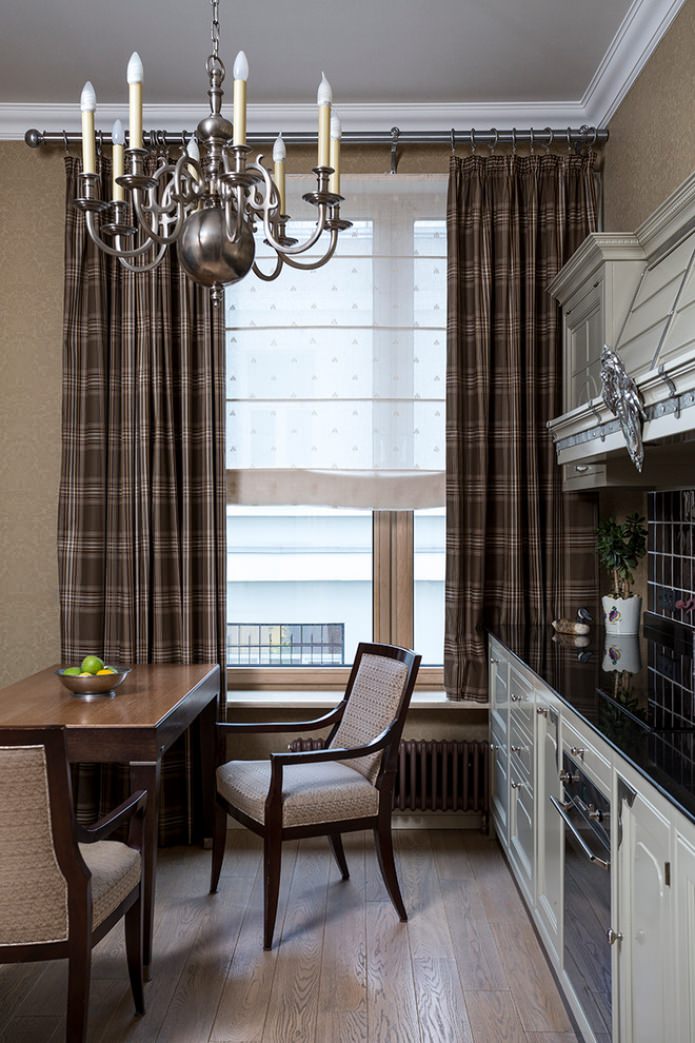
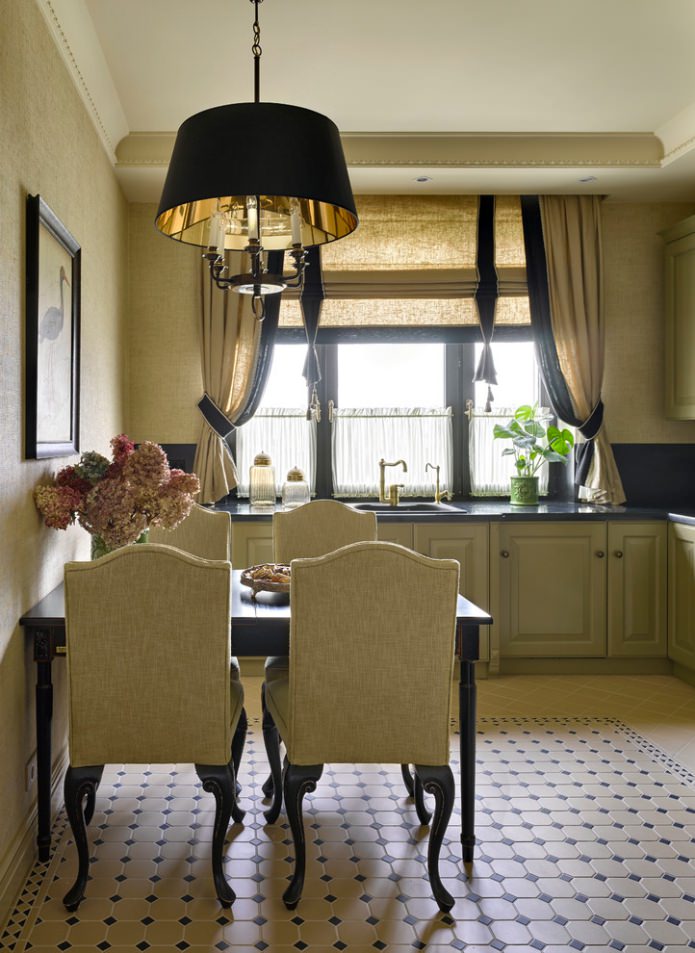
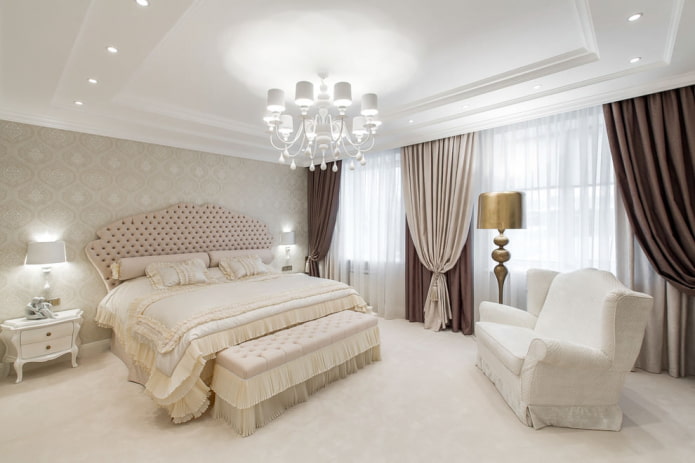

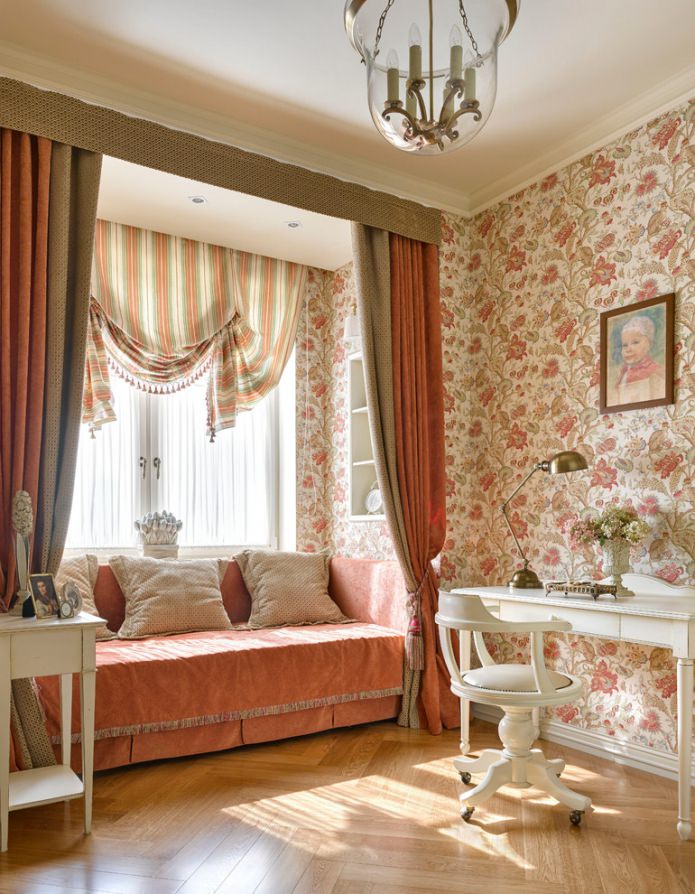
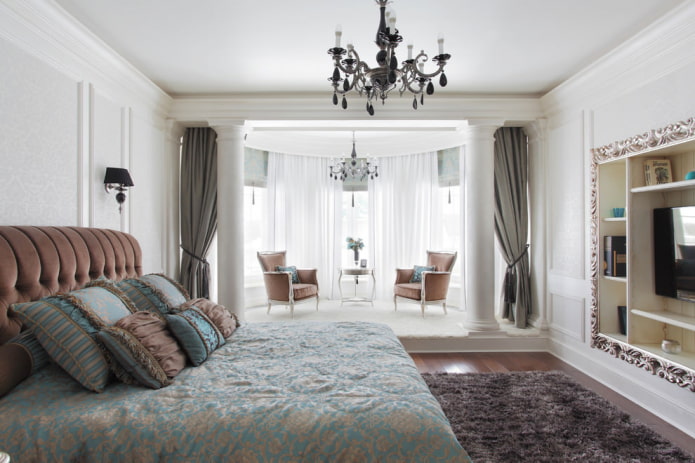

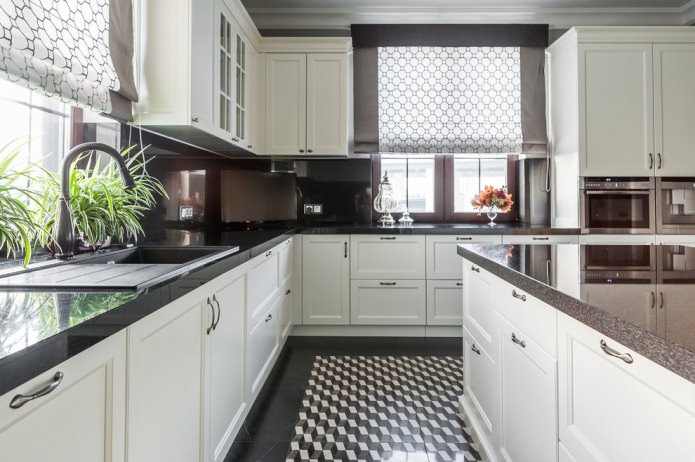
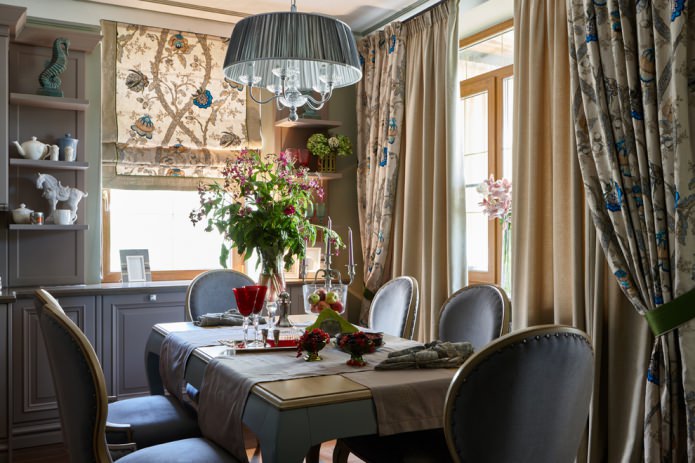
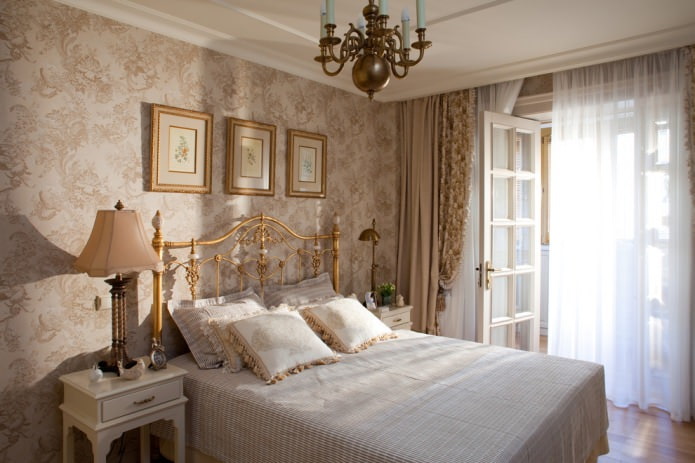
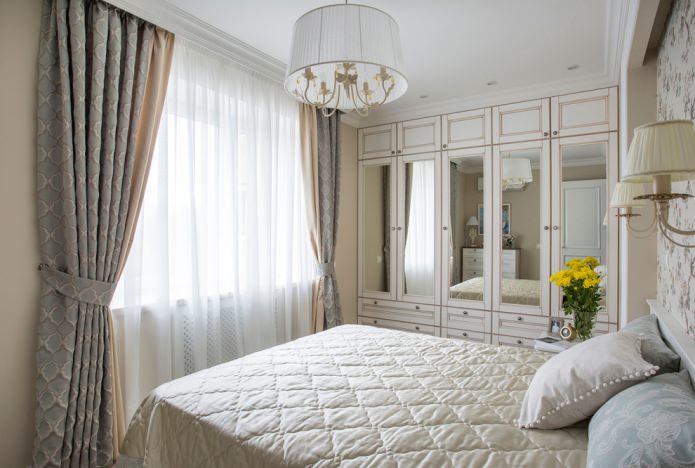
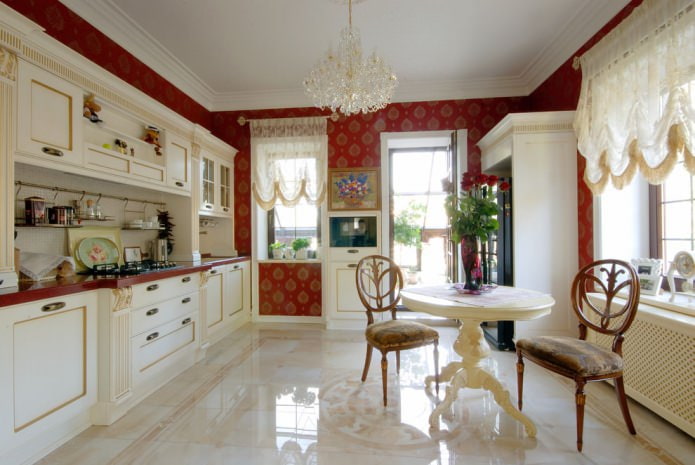

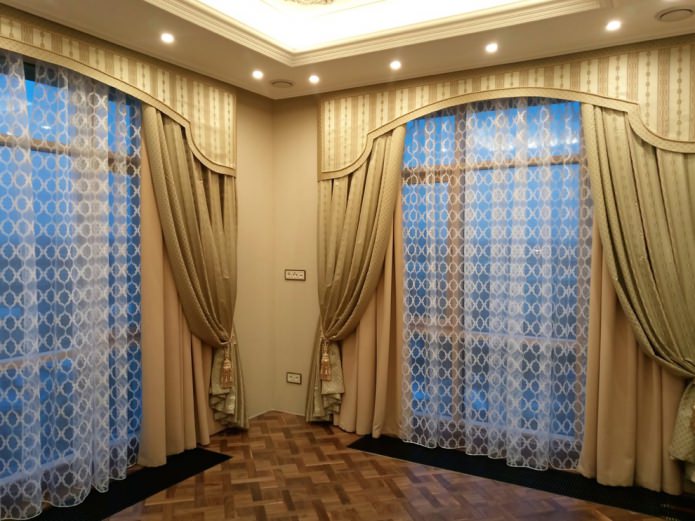
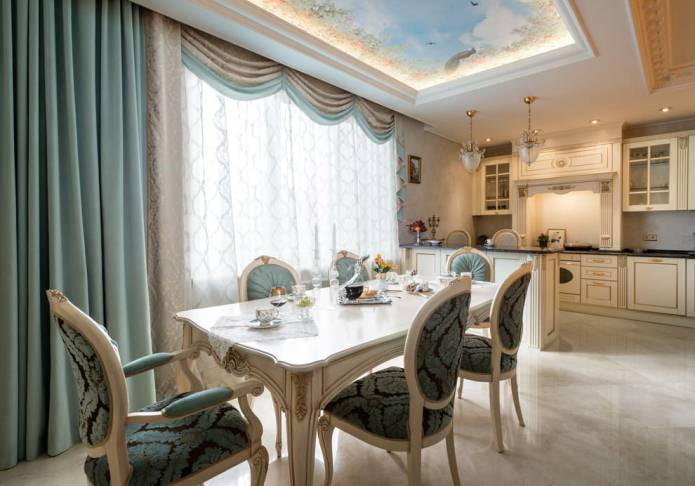
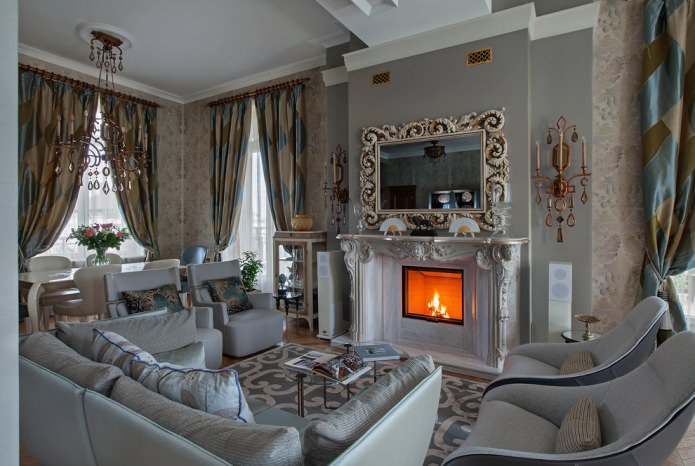
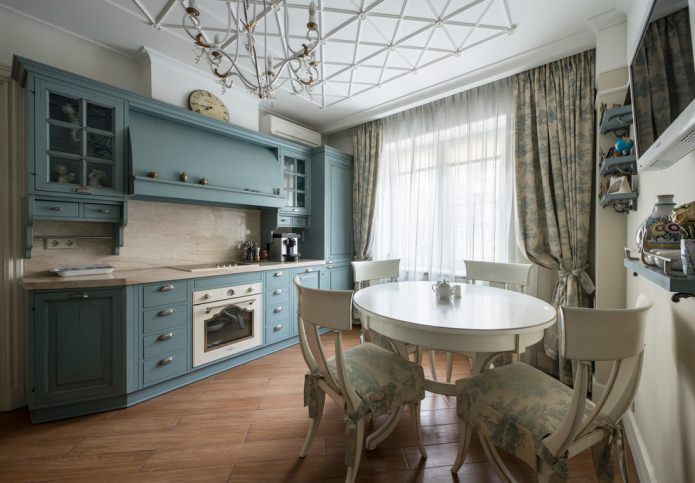
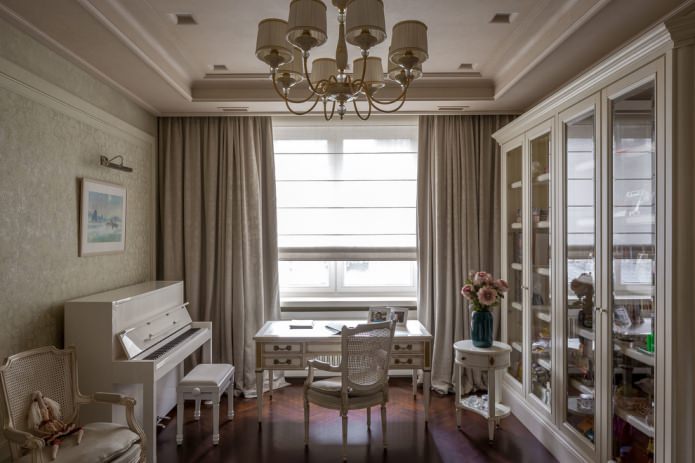
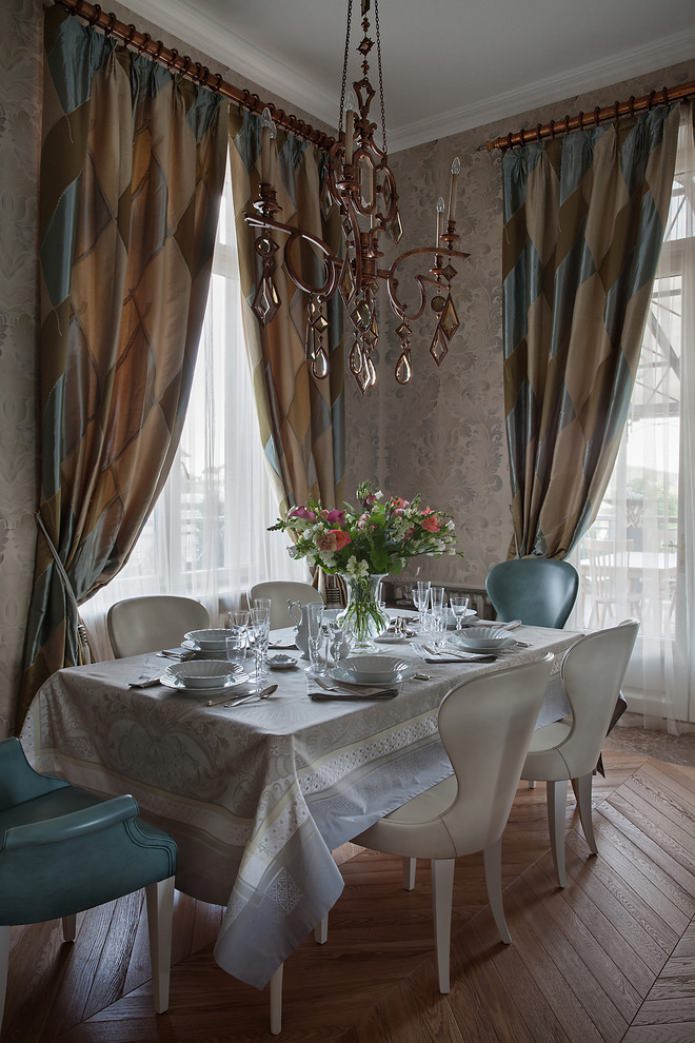
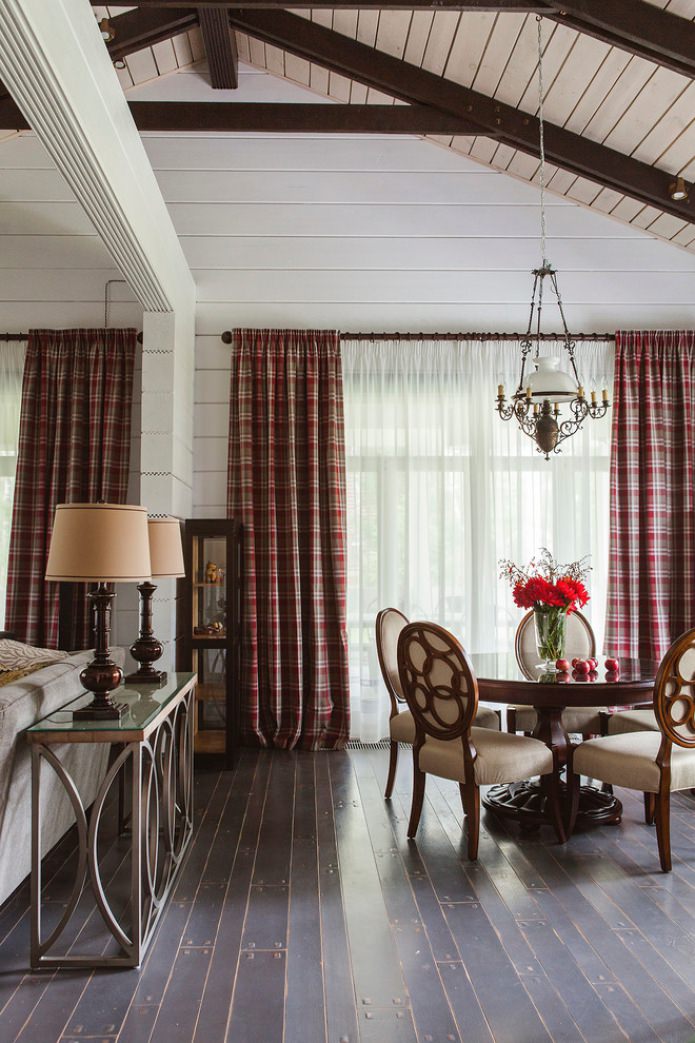
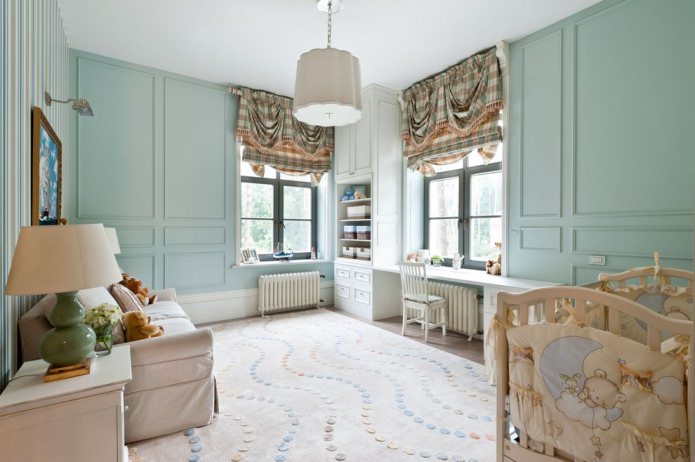
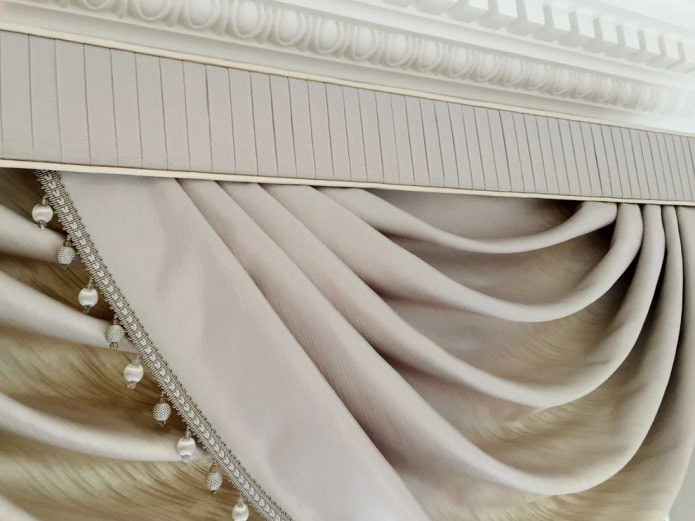
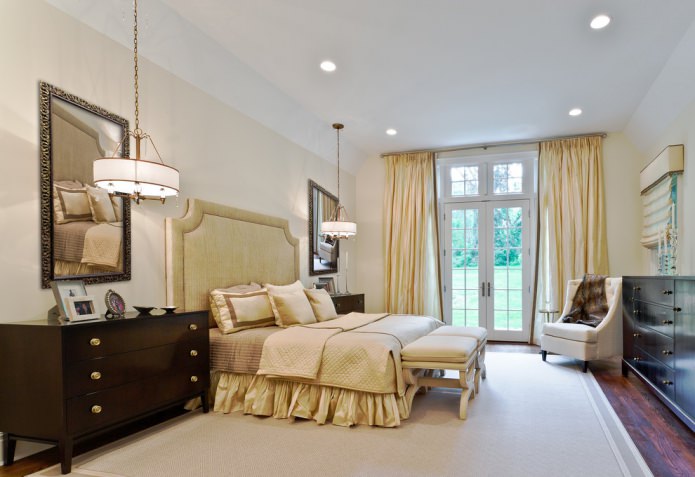
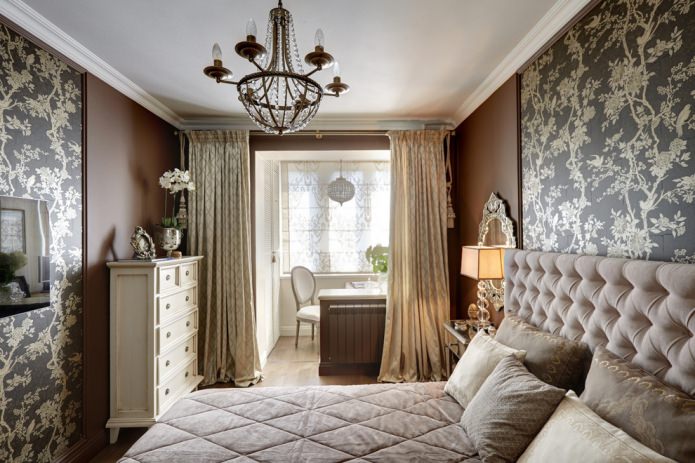
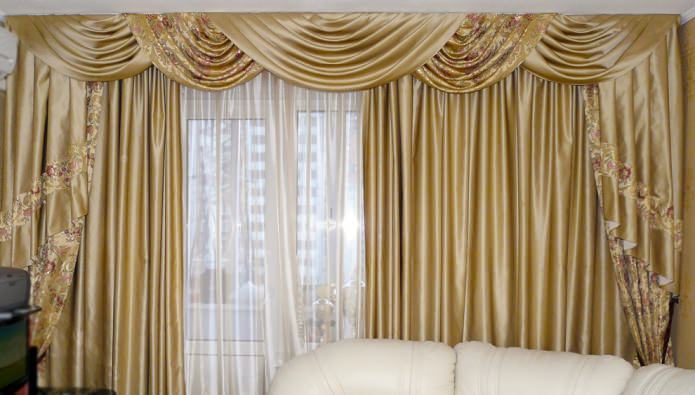
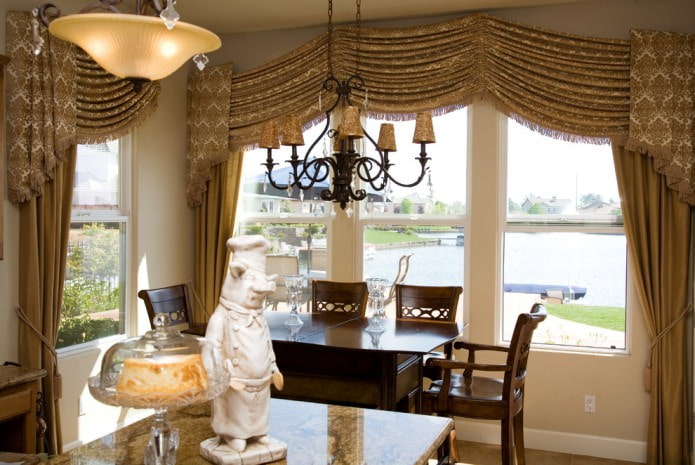
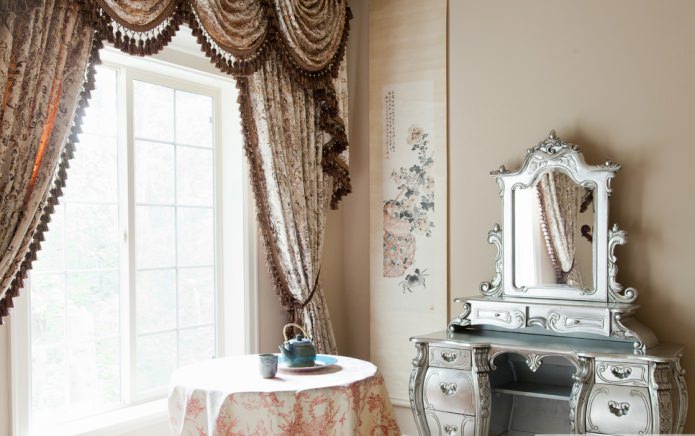


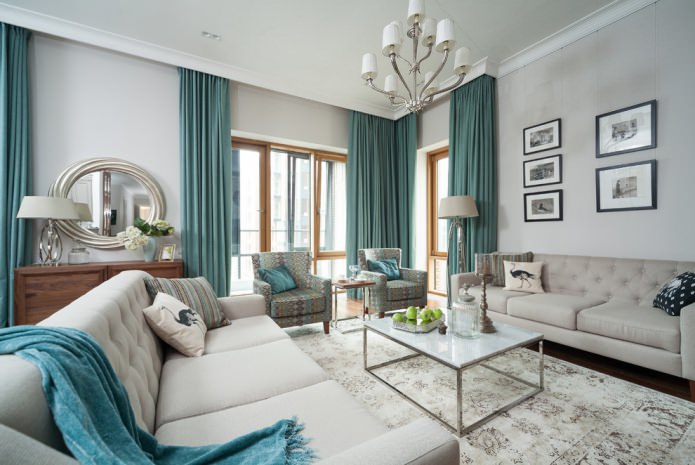
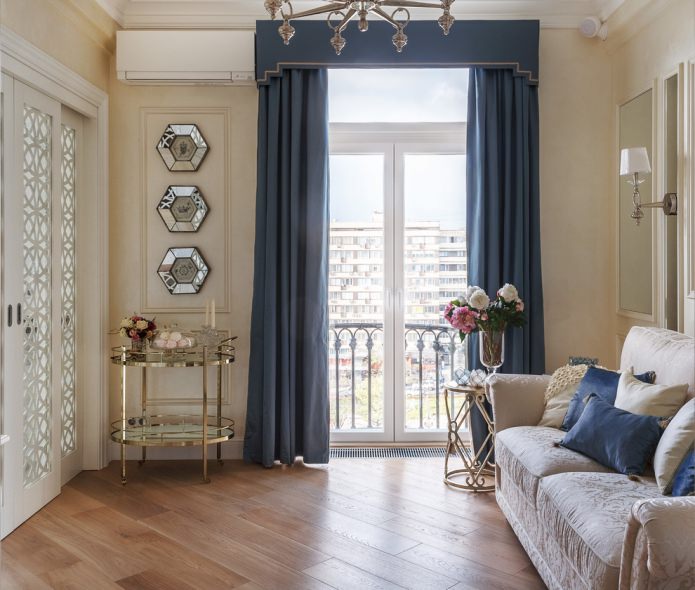
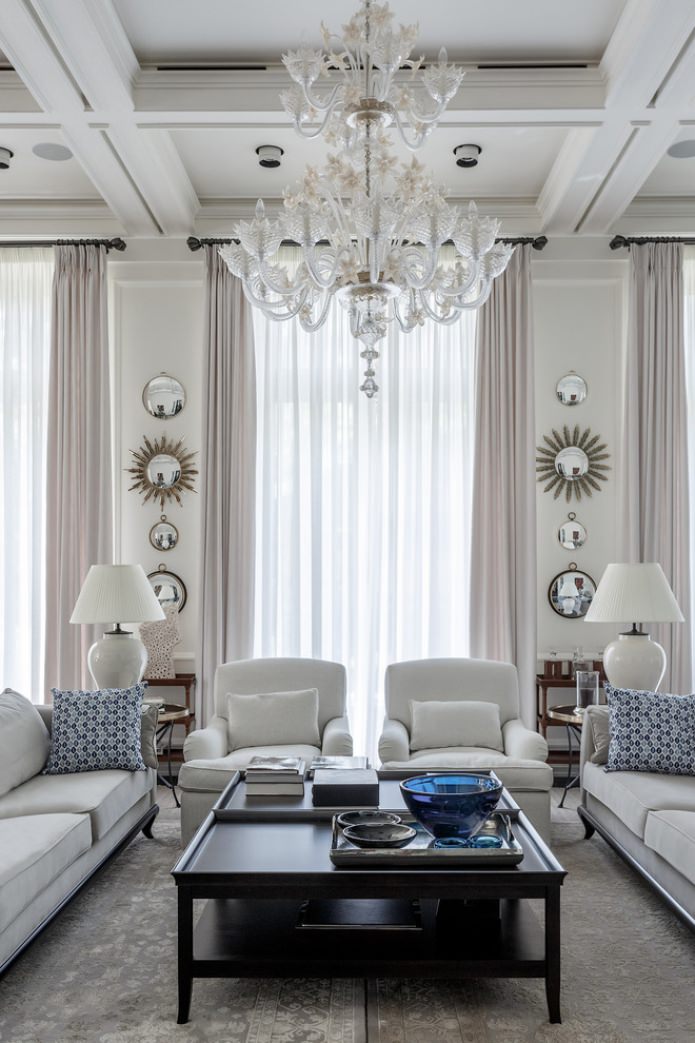
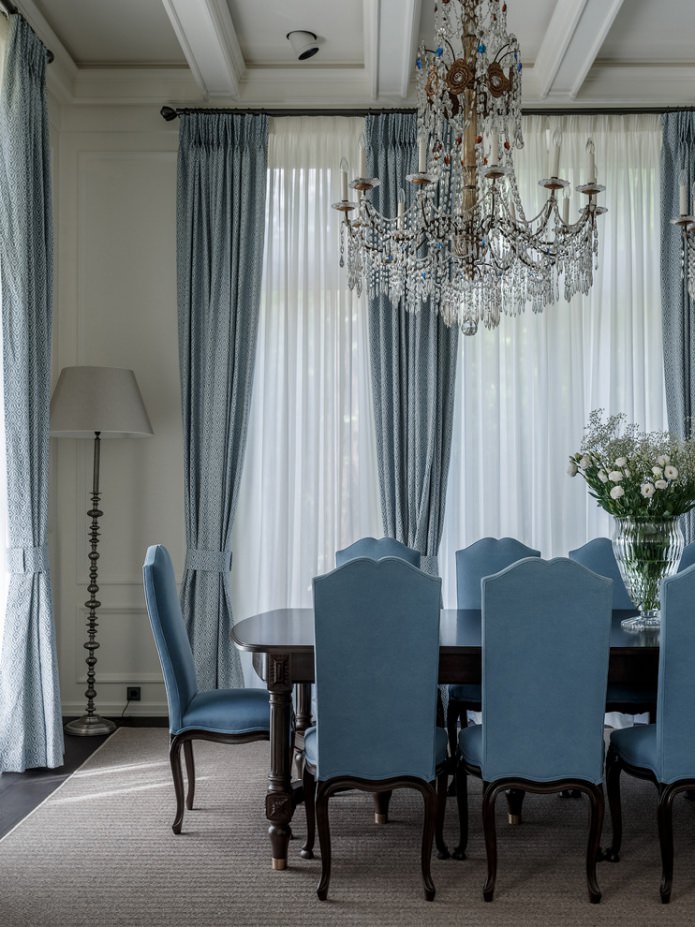
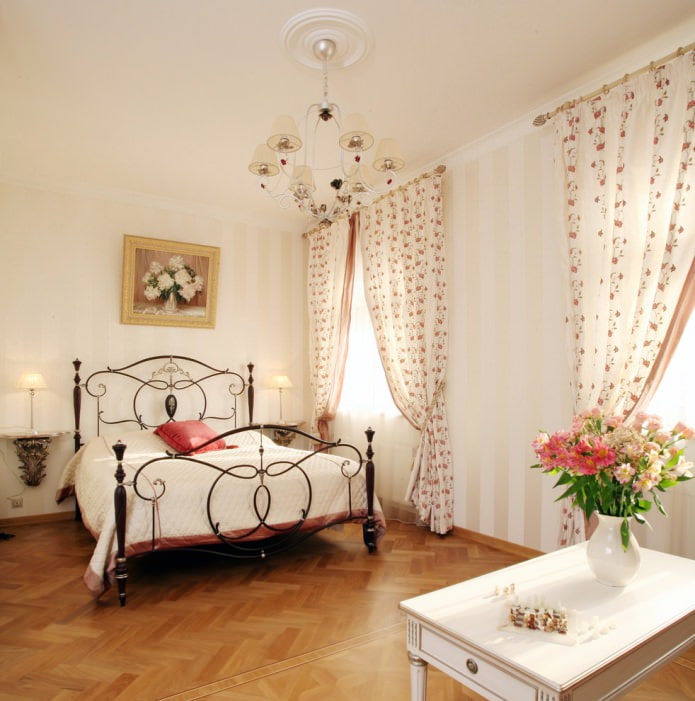
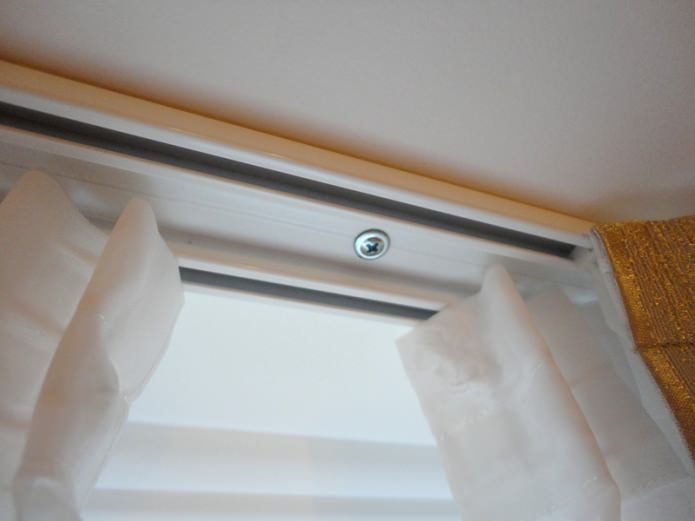
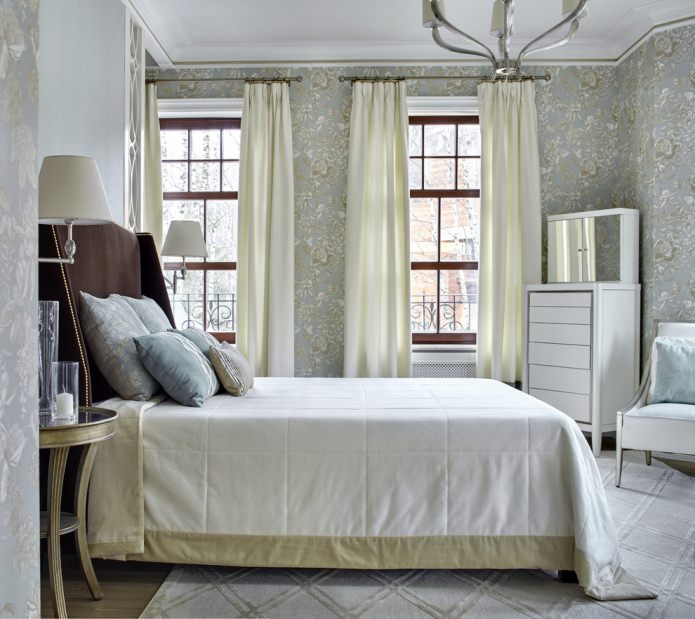
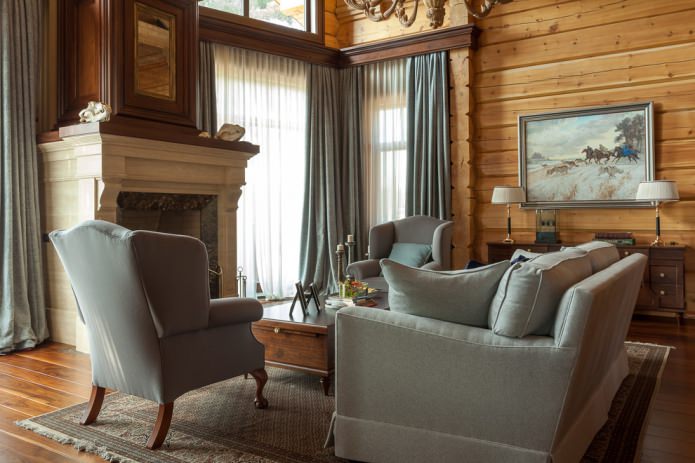
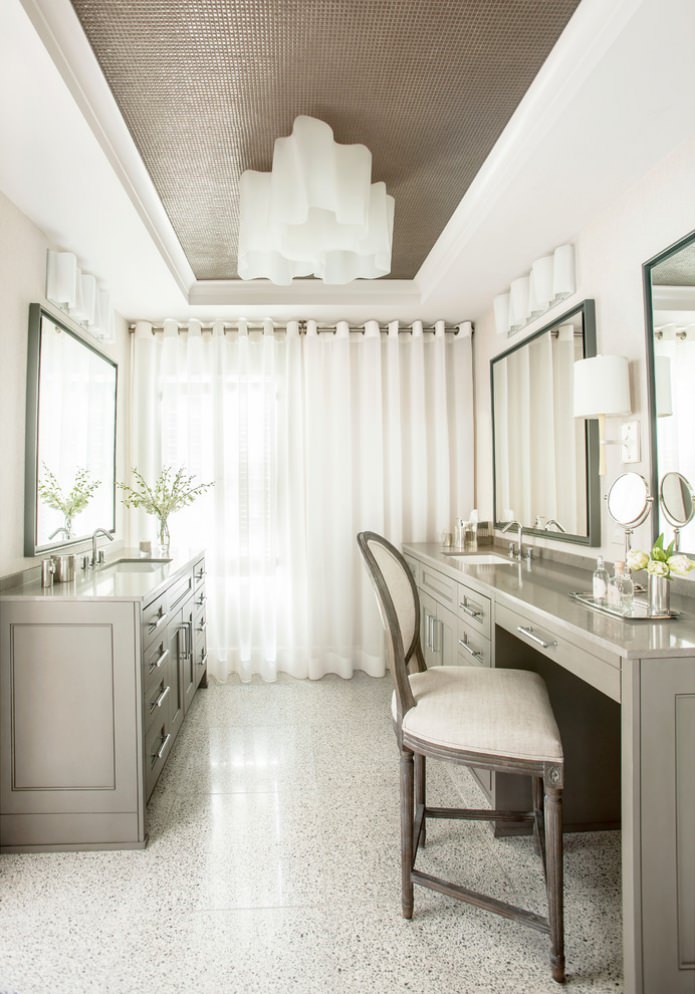
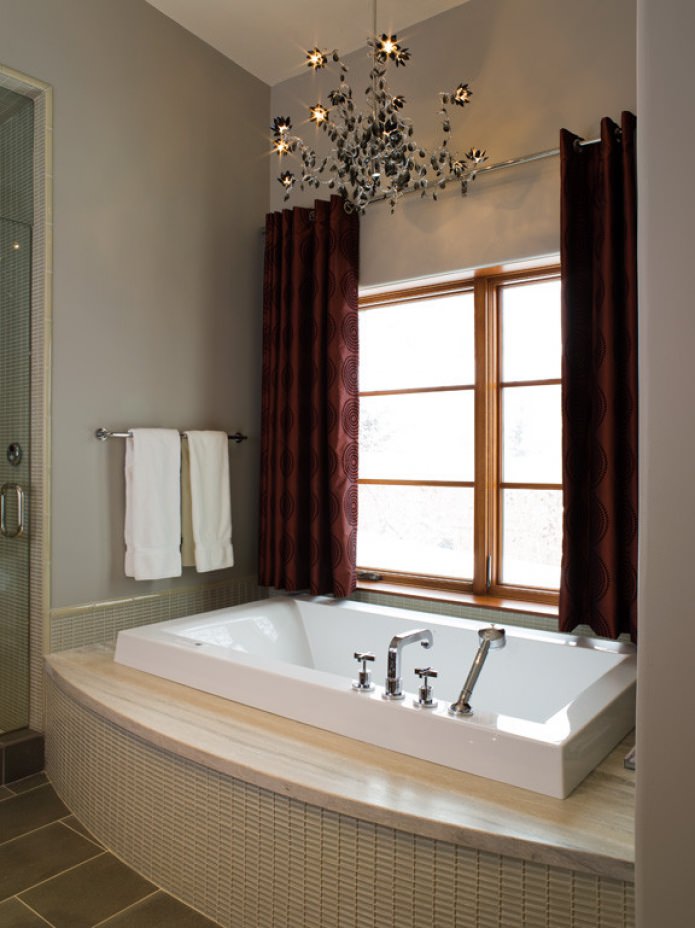
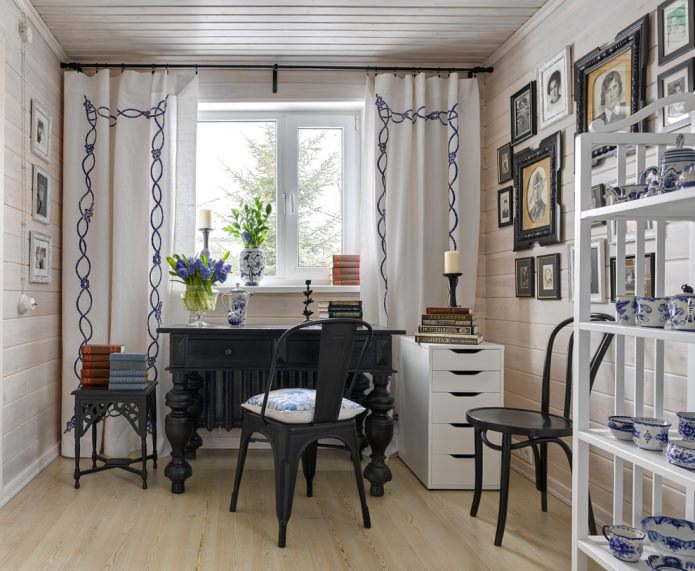
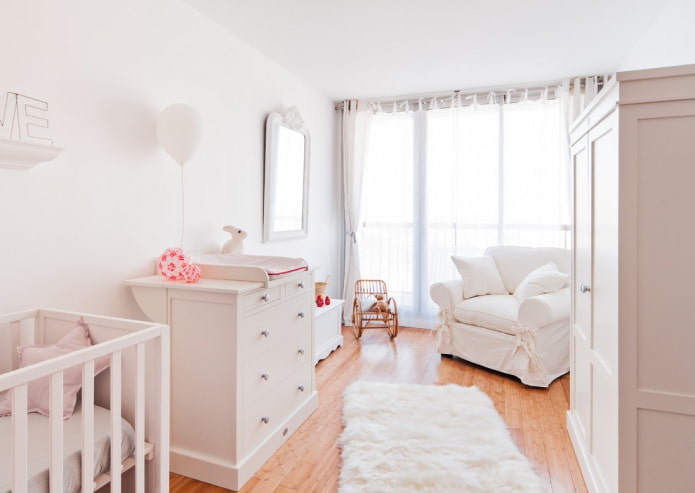

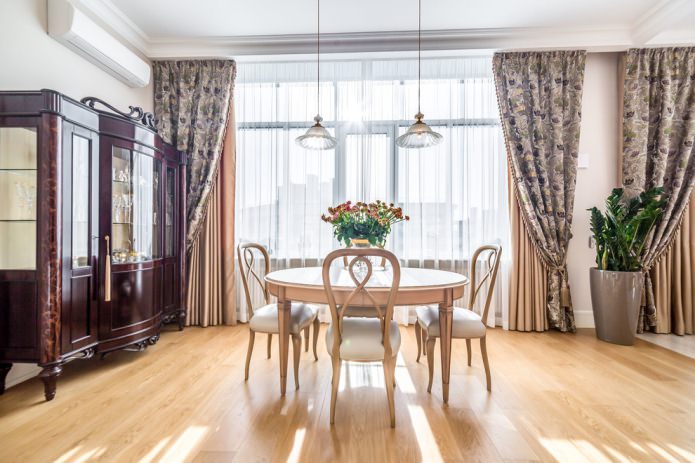
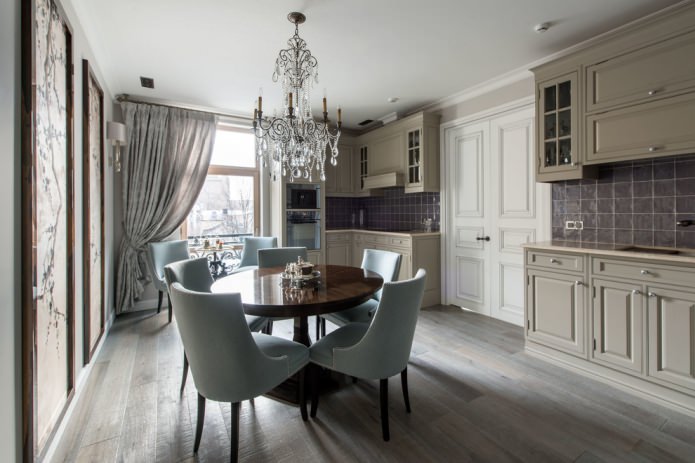
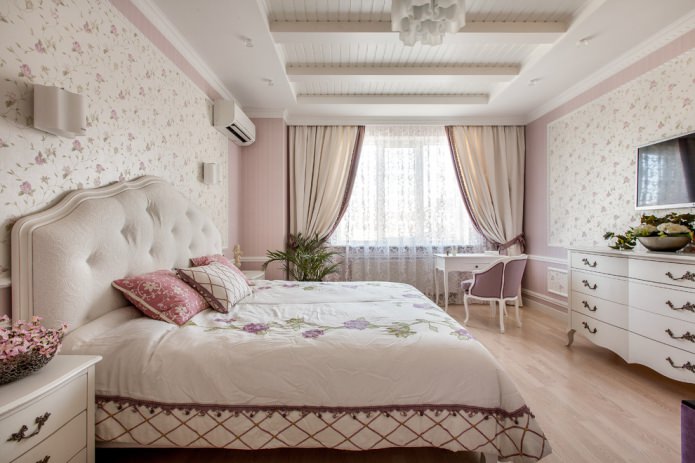
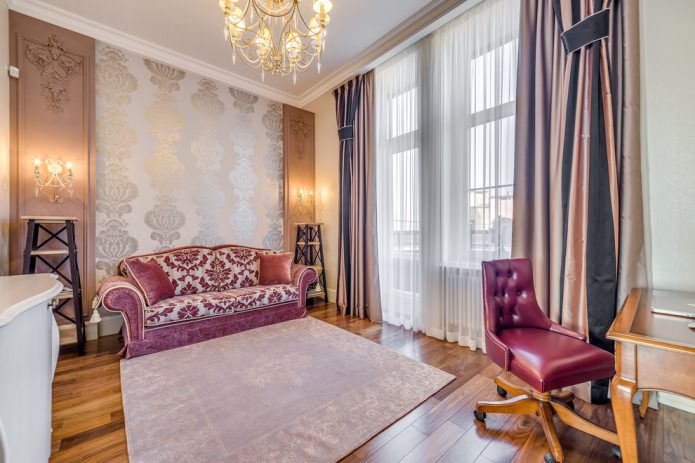
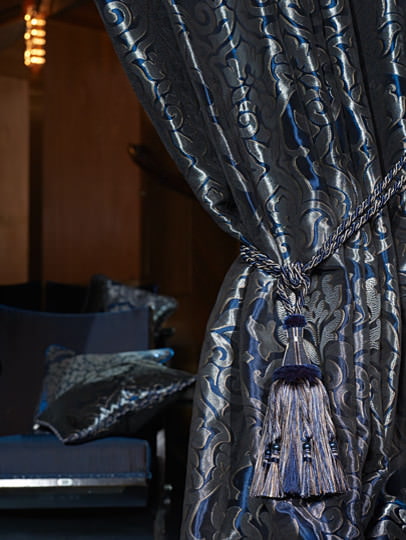
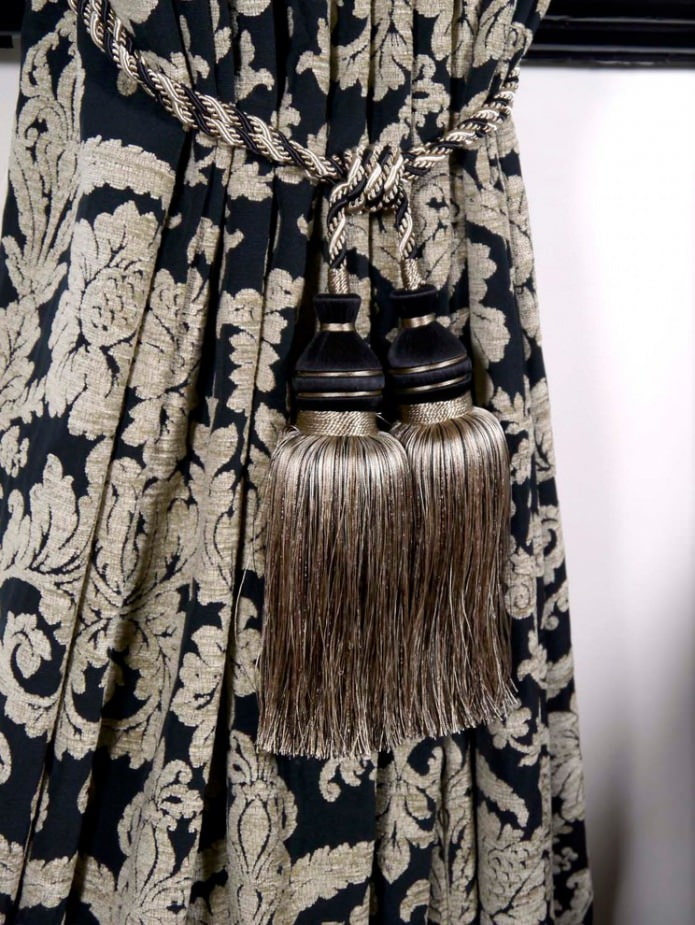
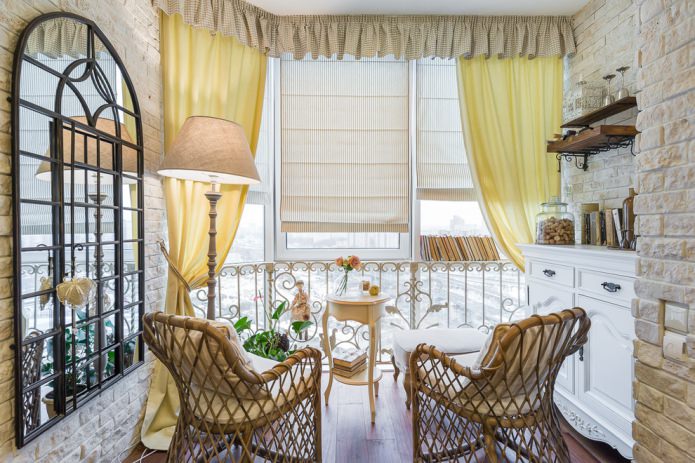
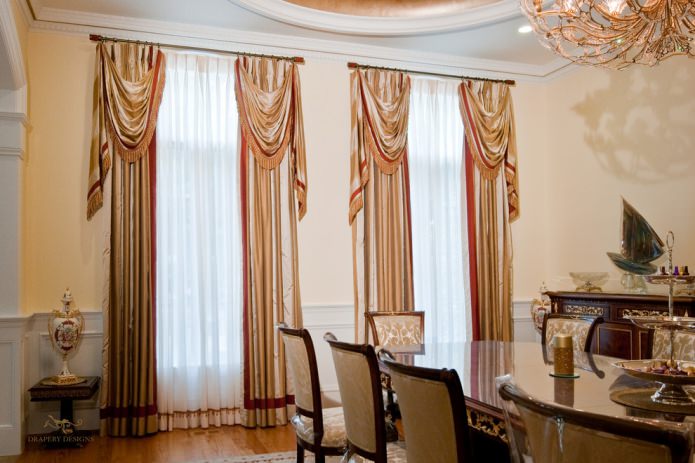

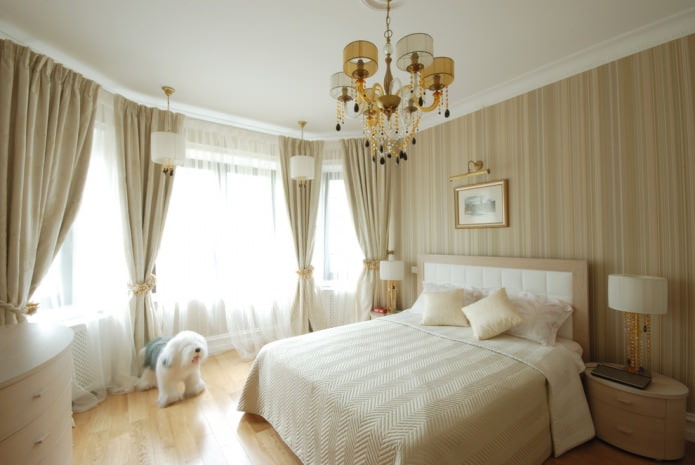
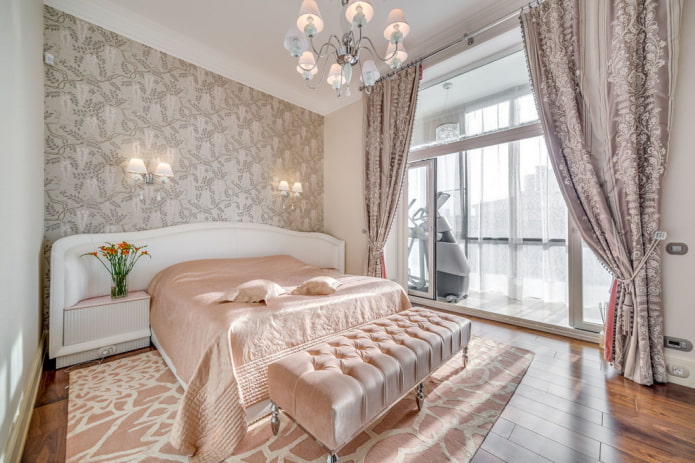
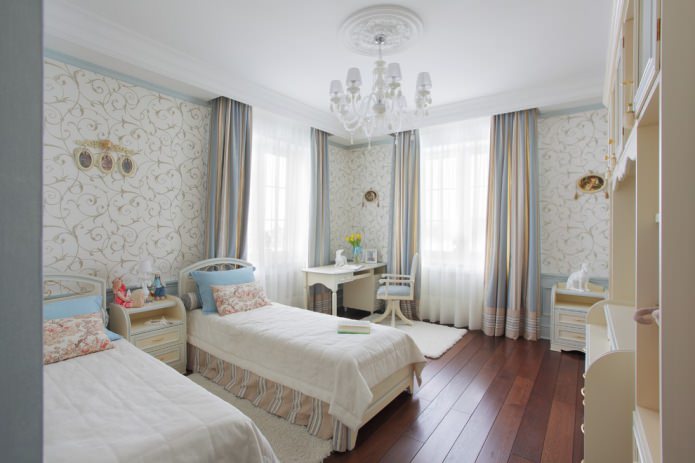
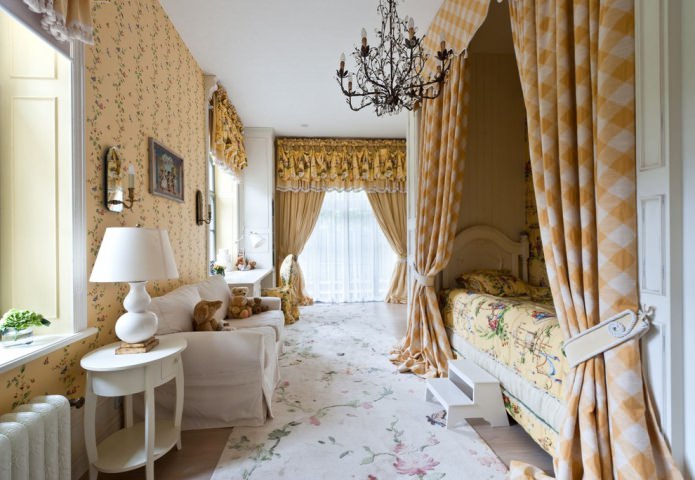
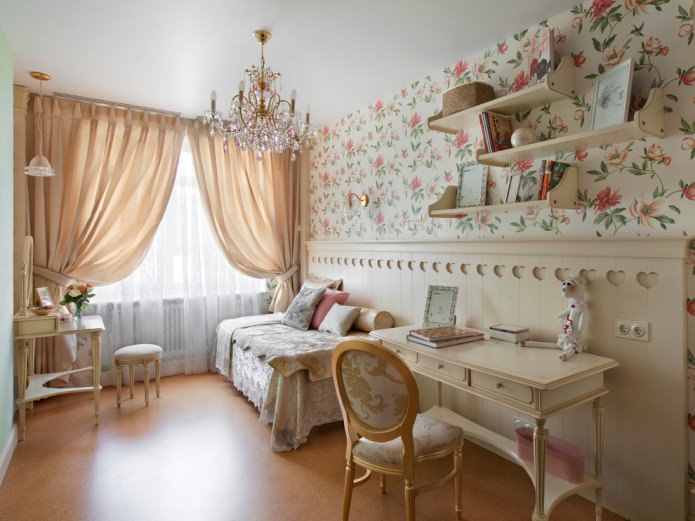
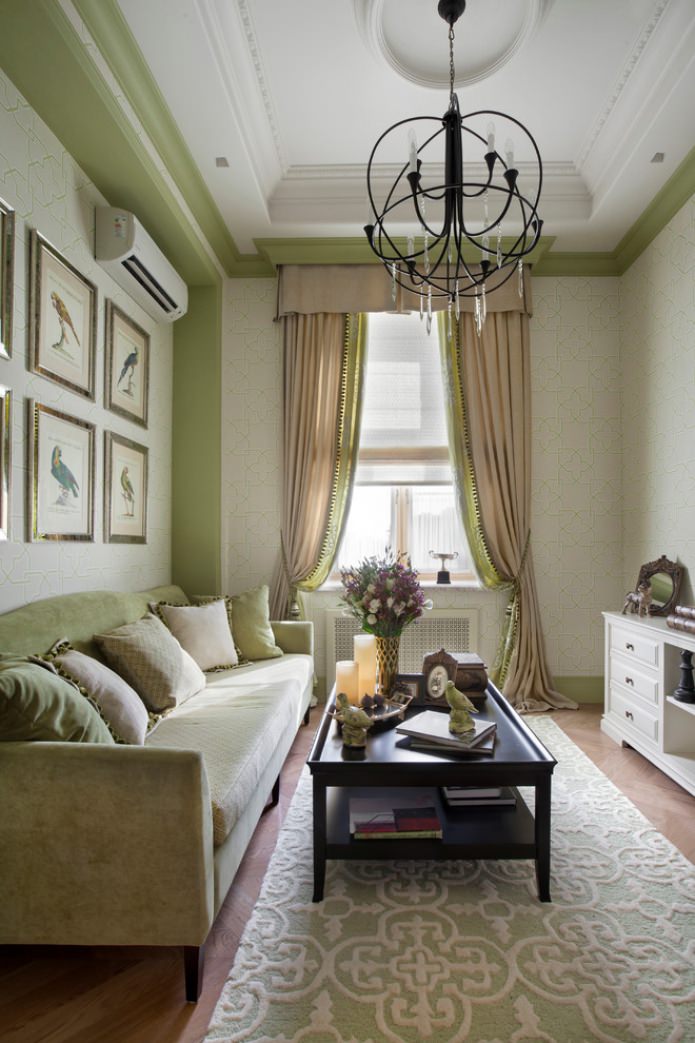
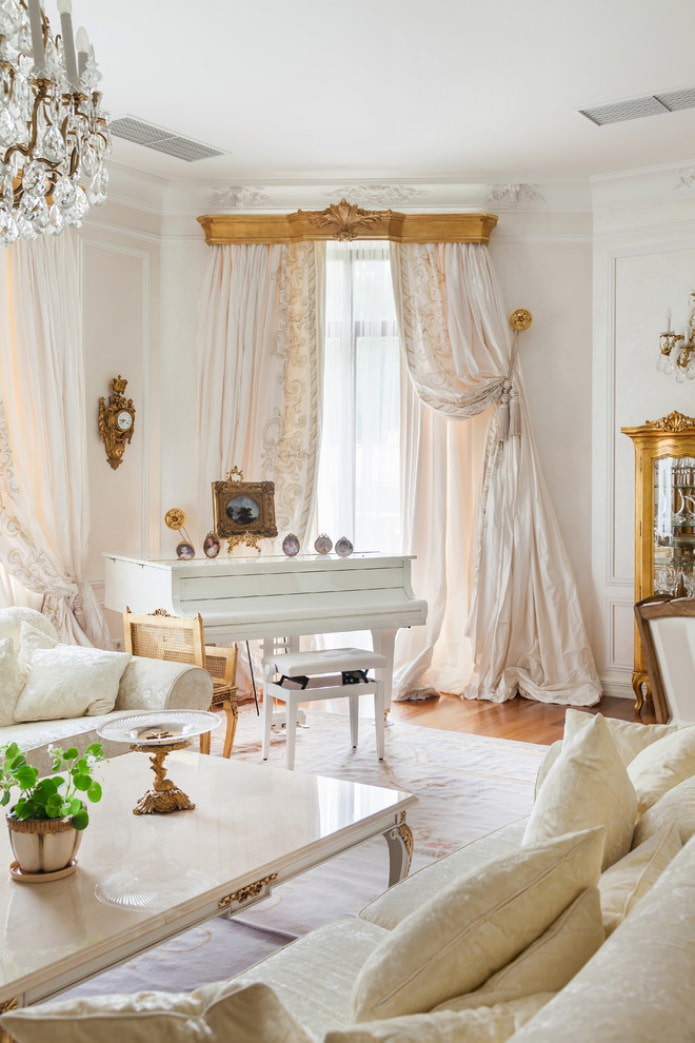


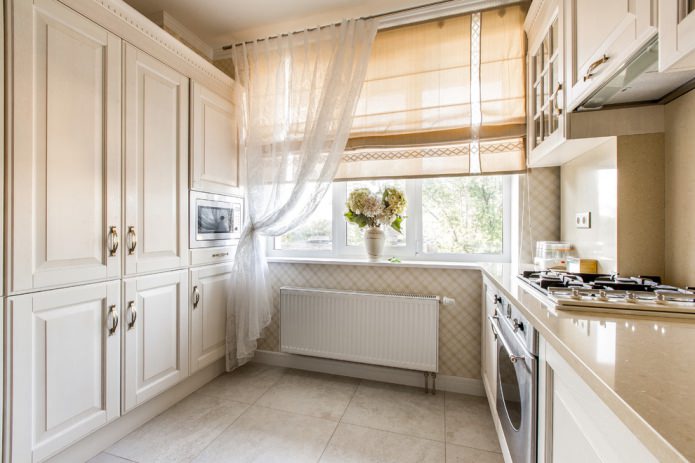
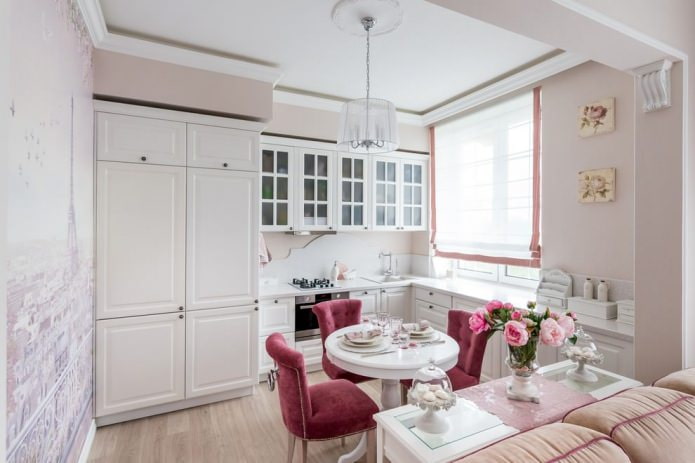
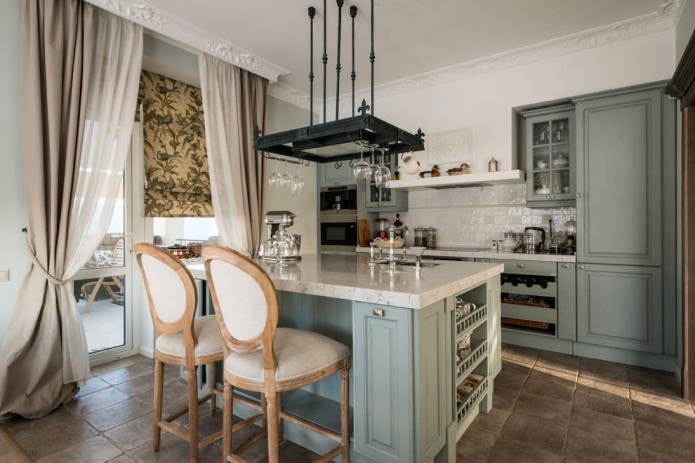
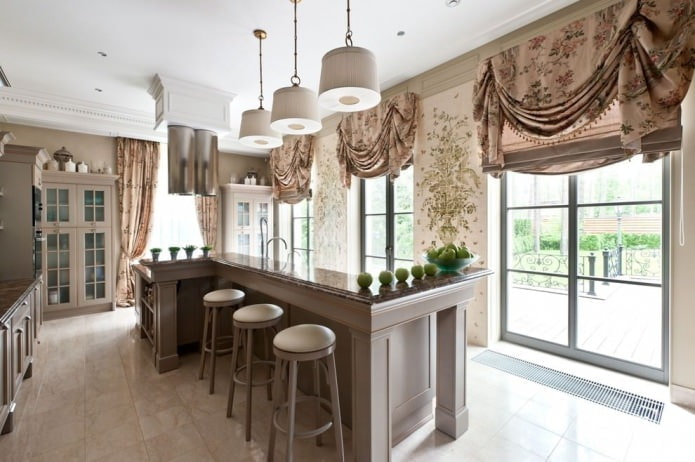
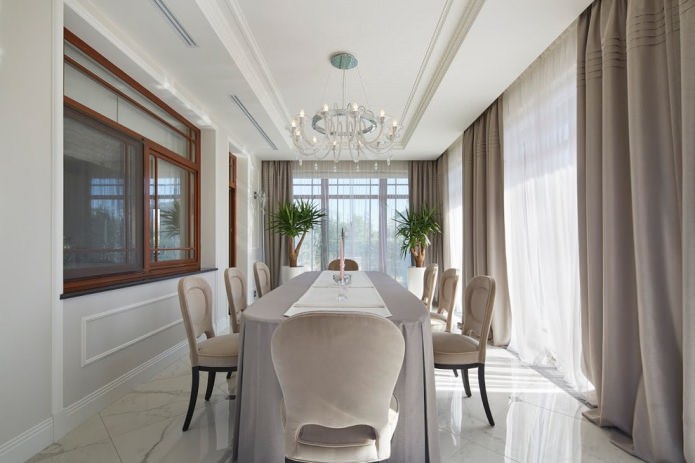
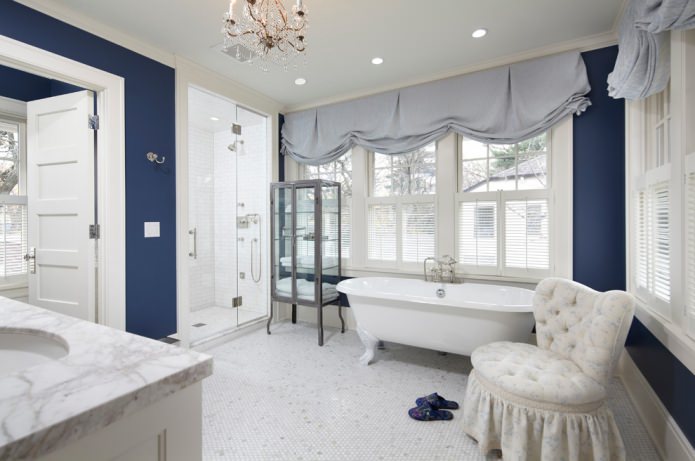
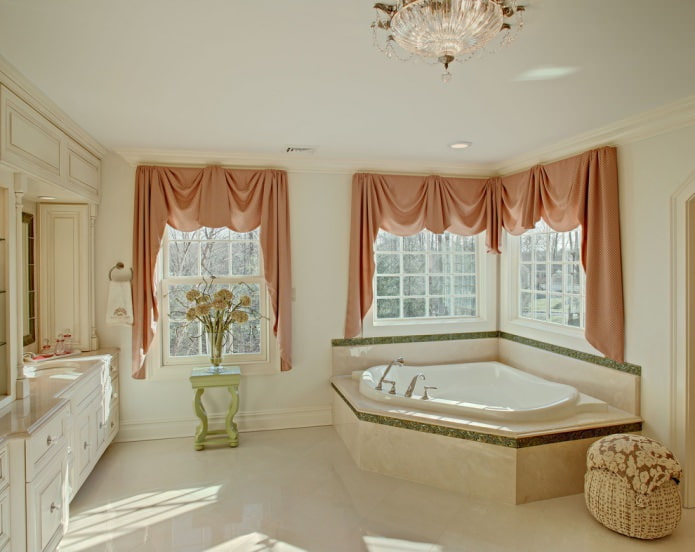

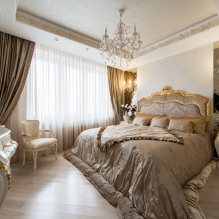
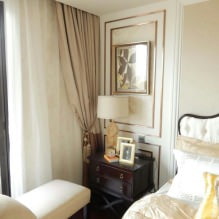
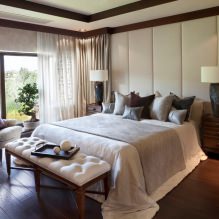

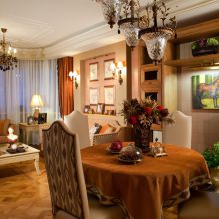
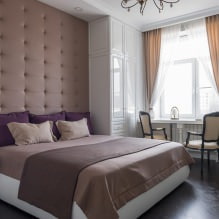
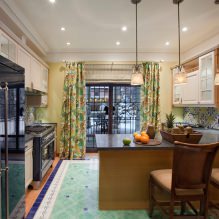

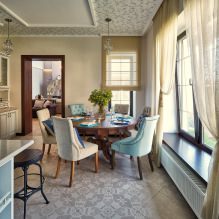
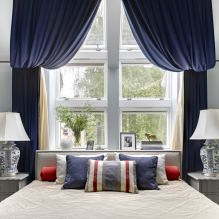
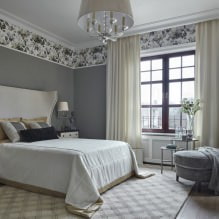
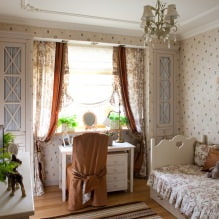

 Top 10 Trends in Interior Design 2020
Top 10 Trends in Interior Design 2020 Rating of cheap TVs with Smart-TV
Rating of cheap TVs with Smart-TV New Year's LED garlands on AliExpress - we disassemble while it is hot so that the house is bright
New Year's LED garlands on AliExpress - we disassemble while it is hot so that the house is bright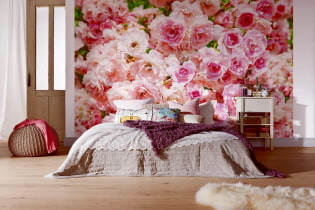 Wall mural with flowers in the interior: living wall decor in your apartment
Wall mural with flowers in the interior: living wall decor in your apartment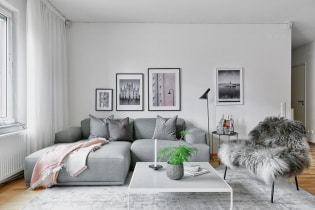 Gray sofa in the interior: views, photos, design, combination with wallpaper, curtains, decor
Gray sofa in the interior: views, photos, design, combination with wallpaper, curtains, decor Interior in peach tones: meaning, combination, choice of finishes, furniture, curtains and decor
Interior in peach tones: meaning, combination, choice of finishes, furniture, curtains and decor